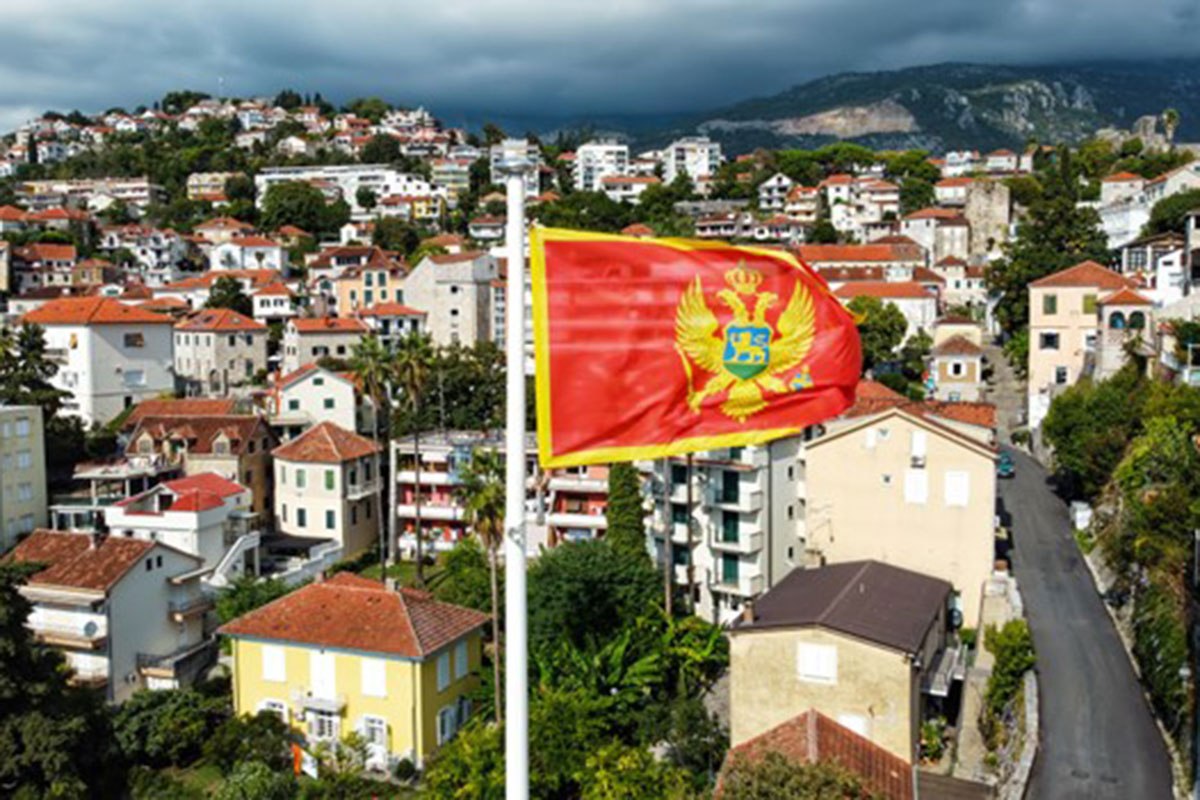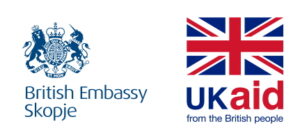The government boasts of the highest GDP growth in Europe, hiding that this growth is much more due to the unfortunate people coming from the eastern part of Europe than to its economic policy.
The action "Stop Inflation 100 +" has been in effect in Montenegro as of the first Monday in October, and, according to announcements, it will last until the end of the year. In agreement with the current government, distributors (importers), wholesalers, and retail chains (there are five of them in Montenegro) have voluntarily selected items for which they have reduced their trading margins (wholesale and retail) to five percent or less.
Then, some home appliance stores, some car parts dealerships, and a restaurant from Danilovgrad (a small town near Podgorica) joined the action, also voluntarily... and it is expected that the owners of pharmacies and drug store chains will soon make their contribution to the lowering of prices.
The government boasts that this is the best and most comprehensive action in the region. "Traders are obligated to define a list of at least 100 products for which they will reduce prices by establishing a maximum retail and wholesale margin of five percent, while for traders with less than 100 employees, the anti-inflation basket includes a list of at least 50 products", they announced.
No obligations or sanctions
However, it is clear to everyone that traders are not "obligated" as the government says, but everything is organized on a voluntary basis (there is no obligation, nor any sanctions) while the state has not invested anything from its coffers into this project, if we don’t count the somewhat lower collection of value added tax (VAT) in the future, due to the reduced bases on which it is calculated.
Traders did not have the obligation to include specific items in the campaign - at least one product from their offer - as was done in Montenegro last spring, and now practically in the entire region. They created the list themselves, and the Government says that they do not have a final list of discounted products with the "Stop inflation" label, but they claim that it includes 150, and perhaps more than 200 different food, hygiene, and cosmetic products (these figures in their announcements regularly go up without specific indicators), which is why citizens have the chance for significant savings on expenses that drain the largest part of the household budget. Retailers, as they say, want consumers to come to their stores and see for themselves what has become cheaper and by how much.
"In order for the citizens to understand that this is really a significant reduction in prices," the Government announced, "we took as an example the anti-inflation basket of the company VOLI, which currently has 148 products (although the list is not final and tends to grow) for which consumers have had to pay 454.71 euros up until recently, while from October 1, the value of this discounted basket is 322.07 euros. Therefore, it is a discount that amounts to 29.17% and thanks to which consumers can save 132.64 euros".
Consumers, on the other hand, claim that the campaign comes too late, the list of discounted products is too short, and that the campaign covers only products that usually don’t sell too well, which is why they are often on the list of items with a reduced price, during the so-called markdowns.
Green markets and gas stations
The "Stop Inflation 100+" campaign does not include green markets and gas stations where, in the opinion of many, the consequences of inflation and the wave of price increases are most visible. So, this summer, at the market in Podgorica, a kilogram of tomatoes cost three euros. That's how much ten farm fresh eggs or 2.5 kilograms of potatoes cost. A liter of milk costs 1.5 euros, a kilogram of homemade cheese costs eight euros, and a kilogram of (cheaper) meat costs about the same. Beef steak in butcher shops in Podgorica costs 30 euros. Along the coastline, prices are generally 20-50 percent higher. In some places even more. Thus, the mentioned cheese is sold at the market in Kotor at a price of 16 euros.
Prices at gas stations are generally uniform, after 12 price increases since the beginning of the year, for five euros you get less than three liters of fuel. The government has announced that, if the rise in prices continues, they will again reduce excise taxes (about 55 percent of the final price).
 Source: freepik.com
Source: freepik.com
There is also the real estate and apartment rental market, where prices have really gone wild, and the state does not even have a basic register of tenants (and landlords), so they helplessly shrug their shoulders at the daily recorded anomalies. A monthly lease of a studio apartment is worth at least 60 – 80 percent of the minimum wage (450 euros). To rent a one-bedroom furnished apartment in better locations in Podgorica or on the coast, you have to pay more than the average salary in the country (about 800 euros), often, it can cost a salary and a half.
Experts believe that there are three basic reasons for the growth of all prices of goods and services in Montenegro.
The role of foreigners
Global events - from the coronavirus pandemic to the war in Ukraine - made production and transport more difficult and expensive. This is most evident with food and energy products. Montenegro generally does not use natural gas, so it was spared those kinds of price shocks. Electricity prices have been practically the same for the last three years, although it has been announced that their price will rise as of New Year’s. Food, however, is a problem. According to the September data of the State Administration for Statistics (MONSTAT), food prices have increased since 2019 by more than 44 percent.
Since domestic production covers only 15 percent of consumption, it is obvious that local prices are dominantly dependent on those in larger markets and stock exchanges. On top of this, there are transport prices, which are also on the rise.
Hence, in Podgorica, comparisons are increasingly being made with prices in Vienna, Rome, Barcelona. These comparisons show that Montenegrin consumers pay more for the same products. However, regional comparisons (Serbia, Croatia, to a lesser extent Bosnia and Herzegovina) show that prices in Montenegro are at the same level, if not slightly lower.
Namely, from the beginning of 2022, with the package of administrative measures of the previous government (waiving salary contribution payments for employees and employers for mandatory health insurance and transferring these funds to the net salary), the minimum wage has increased by 100 percent (from 225 to 450 euros) and the average wage from 550 to 700. The current Government continued on the same track, so thanks to the increase in the salaries of budget users, the average salary in Montenegro in August was over 800 euros. Pensions also grew. The guaranteed (minimum) pension grew from 145 to 288, and the average one - to a little over 400 euros.
Since local employees and pensioners spend most of their income on food, the raises were immediately reflected in the demand at the green markets and megastores. This soon encouraged domestic producers to raise the prices of their products.
It didn't end there: political conflicts in Turkey, then the war in Ukraine, led over 100 thousand (about 20 percent of the local population) Turks, Ukrainians, and Russians to Montenegro. Some work here - more than 1,000 IT companies were founded, whose owners were residents of Ukraine and Russia up until recently, as well as an unknown number of trade and service companies - some are spending their previously earned money. Generally, this money exerted additional pressure on price growth, especially in the real estate market.
This is how we got the following situation: in the spring of 2018, when the average salary in Montenegro was 510 euros, the food necessary for the survival of a four-member family (the so-called minimal consumer basket, i.e., the amount of food needed for the necessary intake of calories) cost 256 euros, i.e., half of the salary at the time. This June, the same food cost 387 euros. Again, almost half the average salary.
Those 3-4 percent represent the achieved progress in terms of the standard of living of the average resident. The government boasts of the highest GDP growth in Europe while hiding that it is much more due to the unfortunate people coming from the eastern parts of Europe than to its economic policy.
The blog was created as part of the “Tales from the Region” initiative led by Res Publica and Institute of Communication Studies, in cooperation with partners from Montenegro (PCNEN), Kosovo (Sbunker), Serbia (Autonomija), Bosnia and Herzegovina (Analiziraj.ba), and Albania (Exit), within the project "Use of facts-based journalism to raise awareness of and counteract disinformation in the North Macedonia media space (Use Facts)" with the support of the British Embassy in Skopje.
Please refer to the Terms before commenting and republishing the content. Note: The views and opinions expressed in this article are those of the author and do not necessarily reflect the views of the Institute of Communication Studies or the donor.


